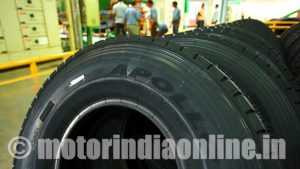Manufacturing safety is about ensuring the design quality of tyres in production process. This will be achieved by the usage of right material with right specification in right process to manufacture tyres in the most uniform manner. It is also equally important for the tyre manufacturers to ensure that the material used in the tyres do not cause any adverse effect on human health, environment and also meet the requirement of customers and regulation. Manufacturing safety complements with design safety to deliver trouble free tyre operation for intended usage life of tyre, says Mr. PK Mohamed, Chief Advisor – R&D, while commenting on the subject topic.

Excerpts:
Mandatory and other safety requirements in products
A Tyre is one of the most important safety components in an automobile. All performance functions expected of an automobile are derived through tyres as they are the only link between the vehicle and road. Every tyre going into market therefore, has to be ensured for its quality that meets all safety requirements.
Tyre Safety has various components that are built into a tyre in different ways. Major components are related to design, manufacturing and tyre application.
Tyre is known as a ‘pneumatic tyre’, wherein the contained air is responsible for load carrying. This is possible only if the casing of the tyre has adequate strength to withstand the contained air pressure, generated heat and fatigue during service life. The tyre designer will ensure that all the performance parameters are met through the selection of material, design features and suitable industrialization process and same will be verified and established through internal and external testing:
1) To endure the required load carrying with possible variations in market
2) To endure running with required speeds, carrying stipulated loads
3) To have strength to hold required levels of inflation commensurate with loading
4) To have sufficient energy to resist an impact or road shock.
5) To have enough holding strength on to the rim to resist creep under driving torque and lateral pull of vehicle.
Though regulations are in place to control tyre usage on vehicles, tyre applications in countries like India are fraught with variations due to absence of proper infrastructure, lack of awareness about right application and the presence of many unorganised players in the transport sector whose sole motivation is in maximising profits. Heavy loading on tyres operating in abusive road conditions, are a common sight in India, which forces tyre manufacturers to overbuild tyres with high safety factors.
Safety apprehensions at higher road speeds
As the road infrastructure improves, change in speed limits is the positive outcome. But this has to be with a provision to ensure road worthiness of the vehicle to operate at the higher speeds levels being considered.
One potential threat in such a situation is in the usage of bias tyres. Currently bias tyres, by virtue of their structural characteristic are not normally recommended to run at a sustained speed beyond 100 kmph and if a customer fits such tyres on a vehicle to run at higher speeds, the same could invite potential safety issues. Even the current truck-bus radial tyres are rated for 130 kmph and a change in speed limits has to be supported with tyres with corresponding speed capability. Creating awareness about speed capability of tyres amongst vehicle operators is also equally important. When the speed capability of the tyre goes up, there is a corresponding reduction in load carrying capacity and if the vehicle operators do not restrict the load accordingly, the same could result in potential problems.
Ensuring design safety in tyres to run with required speed levels of vehicles is one of the fundamental considerations in our product development for OEMs.
Light-weighting necessity and trend
Light weighting is a key focus area for tyre industry. But this is not primarily to address the cost optimisation needs as is the popular belief. Light weighting is to improve overall performance efficiency of tyres and vehicles in terms of fuel efficiency, better comfort and speed capability along with enhanced safety. Light weighting thus becomes a technological challenge that may involve usage of alternative materials or processes and does not necessarily result in cost reduction. Tyres being the un-sprung mass on a vehicle, Light weighting of tyres will ably support the automobile industry to address its primary requirement of meeting emission norms. It is also important to note that the production of light weight tyres calls for better accuracy in manufacturing and hence the present manufacturing systems have to be fine-tuned to produce light weight tyres by way of process capability improvements.
